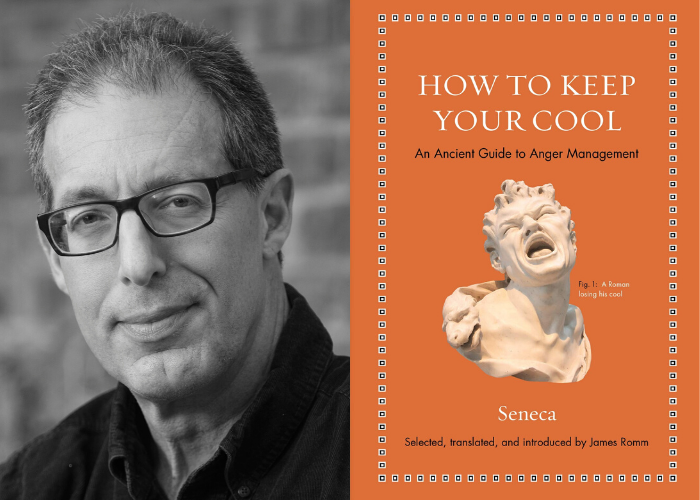James Romm is the James H. Ottaway Jr. Professor of Classics at Bard College in Annandale, NY. He’s also authored several books on ancient Greek and Roman culture and civilization. His latest book, How to Keep Your Cool: An Ancient Guide to Anger Management is a translation and editing of Roman Stoic philosopher Seneca’s writings on the topic of anger. I spoke with James Romm ahead of his upcoming talk and book signing at the 92Y about the resurgence of Stoic philosophy and Seneca’s suggestions on how to keep calm and carry on…
Is the timing of the release of your book, How to Keep Your Cool, in any way tied to the current polarized political climate? Why do you think a book on the topic of anger – and the Stoic philosophers’ guidance on how to suppress it – is needed today?
Yes I was very much concerned about the current climate, not just in politics but all over the web and popular entertainment. The level of rage that the internet makes possible is beyond anything our society has seen. Flaming, trolling, rage-tweeting — some of it practiced by our chief executive — have raised the level of anger in our collective atmosphere. (Let me correct the assumption of your question however — Stoicism is not about suppression of anger, for the most part, but how not to experience anger in the first place.)
In your book, How to Keep Your Cool, you talk about Seneca’s recommendation of shifting our perspective, juxtaposing the quotidian with the immeasurably vast as a strategy to calm our anger. But this can be incredibly difficult, especially in the heat of the moment. Can people really learn to “zoom out”? What’s the best way to actually implement this technique?
I think we all try to “zoom out” in one way or another. For Seneca, looking at the night sky was the ultimate “zoom out.” But others might choose to imagine the ocean, the earth as seen from space, or the vastness of geologic time… Then too, there are other Stoic exercises that help to dispel anger: Imagining one’s own death, or the length of time one will be dead. This is not morbid, if done right, so much as restorative of a perspective in which the thing that made you angry doesn’t matter.
Your book also discusses the theme of shared fallibility in Seneca’s writings. But isn’t shared moral outrage an even stronger connecting force? Aren’t people more likely to bond over mutual anger than mutual shortcomings?
That is increasingly true, but unhealthy, in Seneca’s view. Negative emotions feed on and reinforce one another, just as small fires combine into a conflagration. The internet for example has enabled and amplified hate, sometimes leading to mass shootings and other atrocities.
It’s well known in the field of psychology that anger often acts as a mask for depression in men. Because anger is the only emotion that is socially acceptable for men, they manifest rage when what they’re really trying to say is that they’re hurting. Did the Stoics also see this link between male anger and depression?
For Seneca, anger was defined as desire to punish; it came mostly out of a sense of injured pride. I don’t think he ever saw it arising from depression, though he does discuss the reverse case, when suppressed anger leads to a depression so profound that suicide was the best option. I’ll be examining that problem in my talk.
To what do you attribute the rising popularity of Stoic philosophy as a source of self-help guidance?
Stoicism combines aspects of psychotherapy and religion, both of which are often valuable supports in the confusion of modern life. The Stoics bring us back to the inherent value of virtue and positive action. They assume that we have a purpose in life, beyond mere self-gratification. For many, that’s an important and enriching truth.
Meet James Romm this Wednesday night at the 92Y for a talk and book signing of How to Keep Your Cool. Details here.


